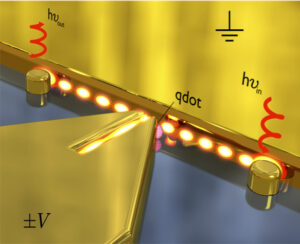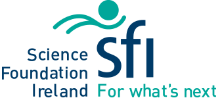DISCO
Dicke-enhanced single-emitter strong coupling at ambient conditions as a quantum resource
The DISCO project aims at the implementation of a new platform to develop and study strongly coupled light-matter systems at the level of individual photons and individual quantum systems at ambient conditions and room temperature. Such systems represent the boundary between localized and flying qubits and therefore represent a key aspect of quantum information processing and quantum communication. By making use of a Dicke-type enhancement of light matter coupling strength, we will introduce a new level of robustness to such systems that will allow for a much improved accessibility of this technology. To achieve this significant advance, progress will be made in terms of nanotechnology, material synthesis and theoretical understanding. To experimentally achieve a Dicke-type enhancement of the coupling strength we will use PbS or PbSe quantum dots that offer up to 64 nearly degenerate levels close to the conduction band edge of a quantum dot. Core-shell colloidal quantum dots will be prepared at the highest possible quality with controlled surface chemistry such that single-emitter experiments can be performed. We will experimentally develop a platform to integrate strongly coupled quantum emitter – plasmonic nanoresonator systems on a surface. Dielectrophoresis will be used to integrate quantum dots at desired positions, such as plasmonic hotspots, using electrically connected plasmonic nanostructures – a technological advance that was pioneered by one of us. An additional advantage of such nanostructures is the possibility to apply very large DC electric fields to quantum emitters which will be used to introduce tunability via the quantum confined Stark-effect. On the theoretical side, we will develop a new approach to the quantum optics of light matter coupling at the nanoscale that takes into account the quasinormal mode structure of plasmonic nanoresonators and considers their role in broadband light matter interactions. Our results will lead to a methodology that will establish strong and possibly ultrastrong light-matter interaction at the single emitter level as a novel quantum resource. To highlight the potential of the developed platform we will demonstrate a prototype device architecture – a scalable nanoscale quantum light (single-photon) transistor that will be able to modulate an optical signal via a single photon. The DISCO project, which is situated in the realm of fundamental physics, will therefore contribute significantly to the foundations of future quantum technology that should exhibit robust performance at ambient conditions.
Call year
Call topic
Area of research
Start date
Duration
Funding support
Project status

Quantum Light Single Photon Transistor is invisaged setup, including two electrically connected electrodes (front and back). The front electrode is shaped tip-like to create localized fields – a field hotspot – between tip and counter electrode, needed for dielectrophoresis to catch QDs at the tip apex (reddish dot). The QD couples strongly to the plasmonic slit mode. A plasmonic edge mode will be launched by a small disc antenna using circular polarized light making use of spin-orbit locking. The transmitted intensity is out-coupled and detected at the second disc. The length of the slit resonator is about 200 nm, the slit width is about 5 nm. The plasmonic edge mode has a propagation length of about 20 mm.
CONSORTIUM
- Coordinator: Ortwin Hess (Trinity College Dublin, IE)
- Bert Hecht ( University of Würzburg, DE)
- Artur Podhorodecki (Wroclaw University of Science and Technology, PL)
PROJECT POSTER: DISCO




